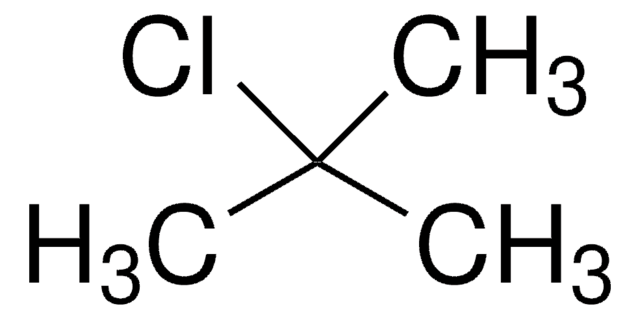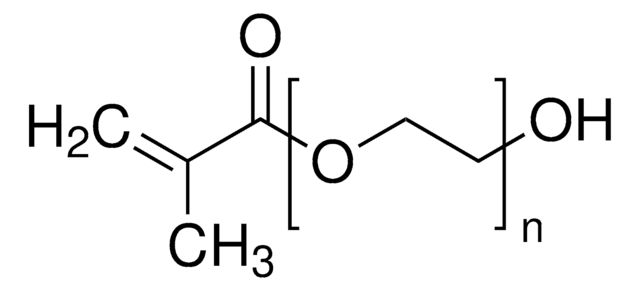Kluczowe dokumenty
360538
tert-Butanol
ACS reagent, ≥99.0%
Synonim(y):
2-Methyl-2-propanol, tert-Butyl alcohol, Trimethyl carbinol
About This Item
44 mmHg ( 26 °C)
Polecane produkty
klasa czystości
ACS reagent
Poziom jakości
gęstość pary
2.5 (vs air)
ciśnienie pary
31 mmHg ( 20 °C)
44 mmHg ( 26 °C)
Próba
≥99.0%
Formularz
solid or liquid
temp. samozapłonu
896 °F
granice wybuchowości
8 %
zanieczyszczenia
≤0.001 meq/g Titr. acid
≤0.01% formaldehyde
≤0.1% water
pozostałość po odparowaniu
≤0.003%
kolor
APHA: ≤20
współczynnik refrakcji
n20/D 1.387 (lit.)
pH
7 (20 °C)
bp
83 °C (lit.)
mp
23-26 °C (lit.)
gęstość
0.775 g/mL at 25 °C (lit.)
ciąg SMILES
CC(C)(C)O
InChI
1S/C4H10O/c1-4(2,3)5/h5H,1-3H3
Klucz InChI
DKGAVHZHDRPRBM-UHFFFAOYSA-N
Szukasz podobnych produktów? Odwiedź Przewodnik dotyczący porównywania produktów
Opis ogólny
It is used in:
- Routine chemical synthesis
- Drying & purification
- Critical labware cleaning
Zastosowanie
Hasło ostrzegawcze
Danger
Zwroty wskazujące rodzaj zagrożenia
Zwroty wskazujące środki ostrożności
Klasyfikacja zagrożeń
Acute Tox. 4 Inhalation - Eye Irrit. 2 - Flam. Liq. 2 - STOT SE 3
Organy docelowe
Central nervous system, Respiratory system
Kod klasy składowania
3 - Flammable liquids
Klasa zagrożenia wodnego (WGK)
WGK 1
Temperatura zapłonu (°F)
59.0 °F - closed cup
Temperatura zapłonu (°C)
15 °C - closed cup
Wybierz jedną z najnowszych wersji:
Masz już ten produkt?
Dokumenty związane z niedawno zakupionymi produktami zostały zamieszczone w Bibliotece dokumentów.
Klienci oglądali również te produkty
Nasz zespół naukowców ma doświadczenie we wszystkich obszarach badań, w tym w naukach przyrodniczych, materiałoznawstwie, syntezie chemicznej, chromatografii, analityce i wielu innych dziedzinach.
Skontaktuj się z zespołem ds. pomocy technicznej





